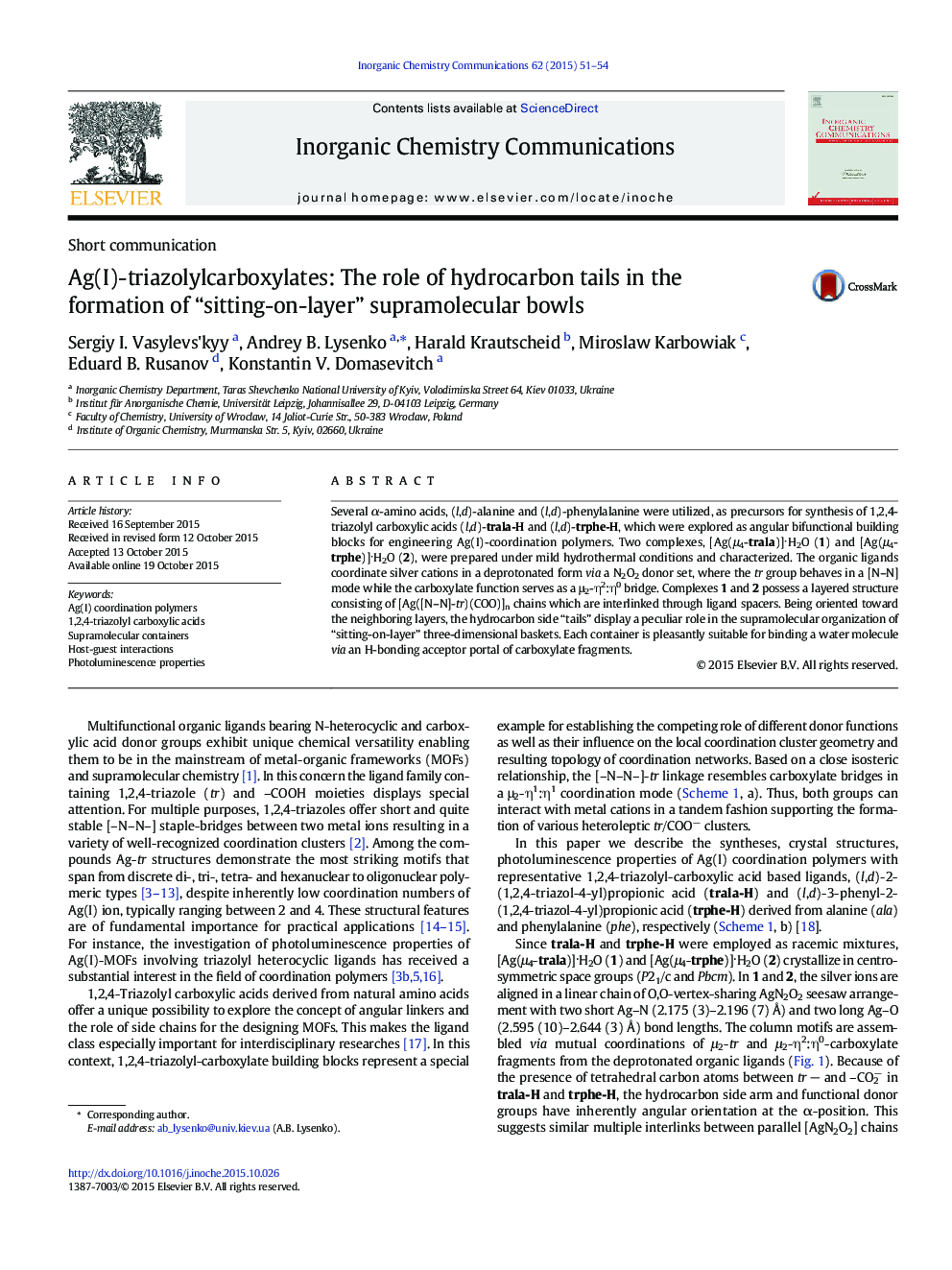| Article ID | Journal | Published Year | Pages | File Type |
|---|---|---|---|---|
| 1301308 | Inorganic Chemistry Communications | 2015 | 4 Pages |
•Self-assembly of Ag(I) with 1,2,4-triazolylcarboxylates affords laminar structures•The hydrocarbon tails display a key role in the formation of “sitting-on-layer” bowls•Each container is fitted to encapsulate a water molecule via carboxylate portals
Several α-amino acids, (l,d)-alanine and (l,d)-phenylalanine were utilized, as precursors for synthesis of 1,2,4-triazolyl carboxylic acids (l,d)-trala-H and (l,d)-trphe-H, which were explored as angular bifunctional building blocks for engineering Ag(I)-coordination polymers. Two complexes, [Ag(μ4-trala)]·H2O (1) and [Ag(μ4-trphe)]·H2O (2), were prepared under mild hydrothermal conditions and characterized. The organic ligands coordinate silver cations in a deprotonated form via a N2O2 donor set, where the tr group behaves in a [N–N] mode while the carboxylate function serves as a μ2-η2:η0 bridge. Complexes 1 and 2 possess a layered structure consisting of [Ag([N–N]-tr)(COO)]n chains which are interlinked through ligand spacers. Being oriented toward the neighboring layers, the hydrocarbon side “tails” display a peculiar role in the supramolecular organization of “sitting-on-layer” three-dimensional baskets. Each container is pleasantly suitable for binding a water molecule via an H-bonding acceptor portal of carboxylate fragments.
Graphical abstract1,2,4-Triazolyl carboxylic acids, the angular molecular tectons derived from natural alpha-amino acids, were employed for engineering Ag(I)-coordination polymers. The presence of hydrocarbon side tails in ligand structures resulted in unique “sitting-on-layer” supramolecular bowls which are perfectly fitted to encapsulate water molecules.Figure optionsDownload full-size imageDownload as PowerPoint slide
